Food for Thought: Austen’s letter 153
The “food for thought” is a new reading of a simple sentence in Letter 153 of Jane Austen’s Letters.
While breakfasting today, I pulled out van Ostade’s book In Search of Jane Austen at the point of my bookmark – page 88. As typical with me, although I had read past the point, my eye drifted towards the early paragraph (but not at the TOP of the page) on the left-hand page. She writes,
“Only a few spelling errors went uncorrected [i.e., demonstrated or endnoted in Le Faye’s editions] — visitted in letter 37, to for too in letter 73 [I may have spotted another one of these], and a fine lines for a few lines in letter 153….”
This LAST one I REALLY wanted to see for myself; I pulled out Modert.
One thing I have learned to do is to really look at the strokes comprising a word. The worst is someone’s name; the ability to puzzle out the MEANING sometimes helps to puzzle out the contentious word. Still, there are times when NO sense can be made of the strokes the pen has made. Let’s face it, there are times that “we” simply don’t spell or make enough “lumps” and the word LOOKS incorrect or not like it should. It’s a crap-shoot, at times, when transcribing handwritten text.
You really are COMPARING the letters in the “unreadable” word with the letters of other words. “How does the writer form letter [such-and-such]?” Conversely, if you think you know what the word should be or have no clue – look to see if that same WORD is present elsewhere. Other sentences might help make sense of that word.
This one — the “few” (transcribed in Le Faye) or the “fine” that van Ostade detected — definitely does NOT look like few. The word DOES begin with “f”; it looks to end with “e”. But I come up with something different from either Le Faye OR van Ostade.
The word looks to be “five“.
I believe we see Austen in the midst of thinking up a comic jab.
The words in Le Faye:
“As to making any adequate return for such a Letter as yours my dearest Fanny, it is absolutely impossible; if I were to labour at it all the rest of my Life & live to the age of Methusalah, I could never accomplish anything so long & so perfect; but I cannot let William go without a few Lines of acknowledgement & reply.”
To justify the lines as they appear in the holograph:
“As to making any adequate return for such a Letter
as yours my dearest Fanny, it is absolutely impossible;
if I were to labour at it all the rest of my Life &
live to the age of Methusalah, I could never accomplish
anything so long & so perfect; but I cannot let William
go without a few Lines of acknowledgement & reply.—“
An Aside: It is interesting to SEE that in the small words that end in “t”, (“it” – “at” – “let”), Austen does not cross the “t”. This differs from double-t’s (“letter”) and longer words that end in “t” (“without”, “cannot”).
But back to the word “five“:
Beginning in the middle of the line, Austen moves from the obligatory (highly elaborate) PRAISES of Fanny’s own letter. Was this letter carried from Fanny Knight to Aunt Jane by brother William Knight? Had it come through the mail? Unfortunately, the holograph of Fanny’s letter is missing. However, the phrase “I cannot let William go without….” sounds like his visit was one that would see him leave Chawton for home (Godmersham) and be the expedient conduit for her answer to Fanny’s letter.
It would be natural for a writer to say, I cannot let this person depart without “a few lines of reply”. But this was JANE AUSTEN, who already wrote with her tongue firmly in cheek (who else would internalize Methusalah!?!). With mind racing ahead, she began to write the standard phrase “I cannot let William go without a reply”. Instead, came the idea that she had written “five Lines of acknowledgement”. In a hurry and without re-reading the letter (as people sometimes would do), the word “a” before “five” did NOT get scratched out nor relocated (inserted) to just before the word “reply”.
But isn’t it a true Austenian comment, to joke, “I cannot … go without FIVE Lines of acknowledgement“, which Fanny would well have understood.
Compare for yourself by locating on the above letter snippet Austen’s other uses of “n” – “w” – and “v”.
 [click to enlarge]
[click to enlarge]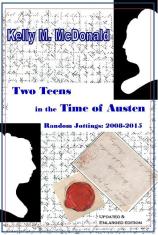
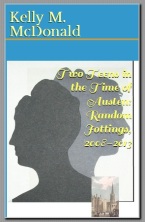
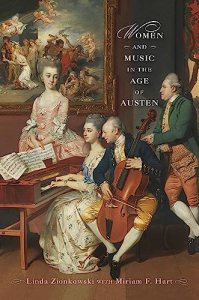







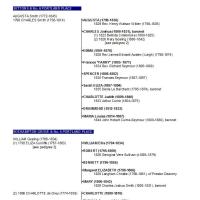

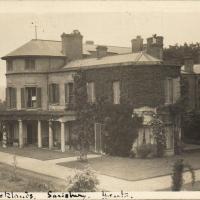




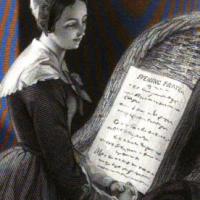
elizabethmillsgenealogy said,
February 21, 2024 at 12:53 pm
I have read this section and believe that the squiggle you and others have interpreted as an amphasand (&) is ACTUALLY the word “or”. If you read through again, substituting or for & you will see that your “five lines” interpretation makes even more sense.
Janeite Kelly said,
February 21, 2024 at 11:18 pm
Hi, Elizabeth – interesting thought. And you see the “rabbit hole” one slides down when interpreting every swipe of a pen! I’ll have to look up how she wrote the word “or”. Thanks for commenting – exactly the eagle eyes needed. k